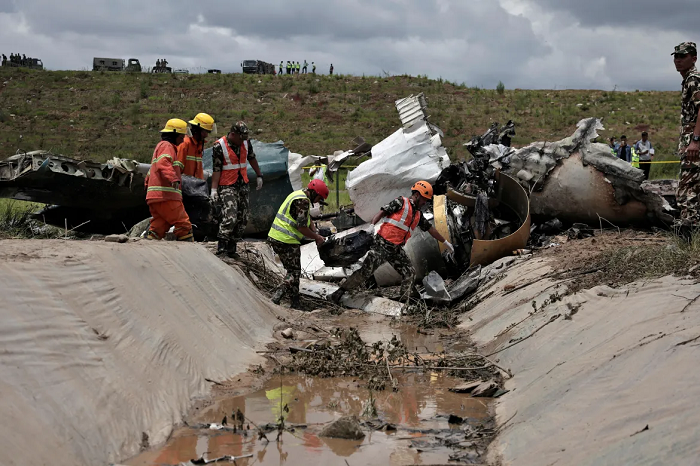
Eighteen people lost their lives on Wednesday when a Saurya Airlines plane crashed during takeoff from Kathmandu’s Tribhuvan International Airport. The aircraft, which was en route to Pokhara for routine maintenance, veered off the runway and burst into flames.
The flight was carrying 19 people, all employees of the airline, including two crew members and 17 technicians. The only survivor was the pilot, who is currently receiving treatment at a local hospital.
Eyewitnesses and photos from the scene showed thick black smoke billowing from the burning plane, with emergency responders working quickly to extinguish the flames and conduct rescue operations. The crash occurred at approximately 11 a.m. local time, and while the airport was temporarily closed, it reopened within hours.
The Civil Aviation Authority of Nepal confirmed the details of the incident, noting that the plane veered to the right shortly after takeoff and crashed on the east side of the runway. The aircraft, a 50-seat Bombardier CRJ-200, was scheduled for a month-long maintenance starting Thursday.
Nepal’s mountainous terrain and sudden weather changes make it one of the most challenging places in the world for air travel. Despite efforts to improve safety standards, the country continues to experience frequent air accidents. This latest crash adds to a series of tragic incidents, including a Yeti Airlines crash in January 2023 that killed at least 72 people, and a Tara Air crash in May 2022 that resulted in 22 fatalities.
Since 2000, nearly 350 people have died in plane or helicopter crashes in Nepal. The deadliest incident occurred in 1992 when a Pakistan International Airlines Airbus crashed into a hillside near Kathmandu, killing 167 people.
This tragic event underscores the ongoing challenges and risks associated with air travel in Nepal, highlighting the need for continued improvements in aviation safety and infrastructure.






Be First to Comment